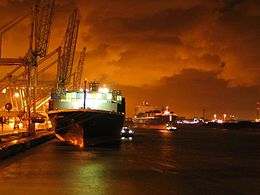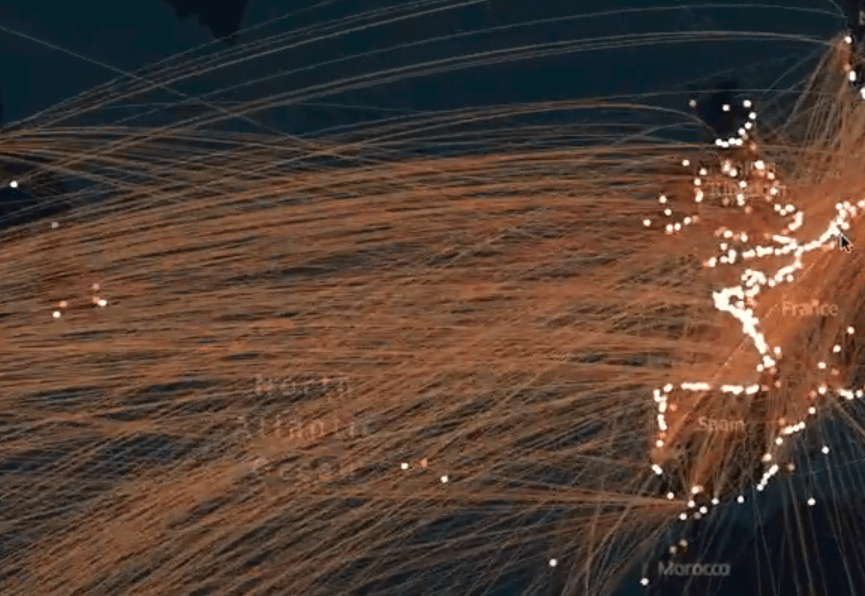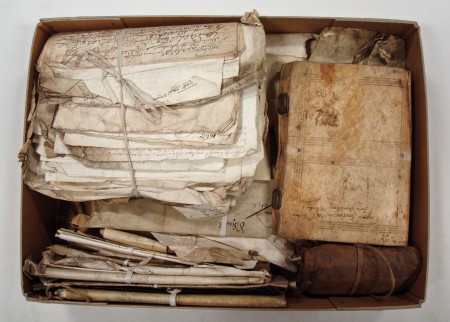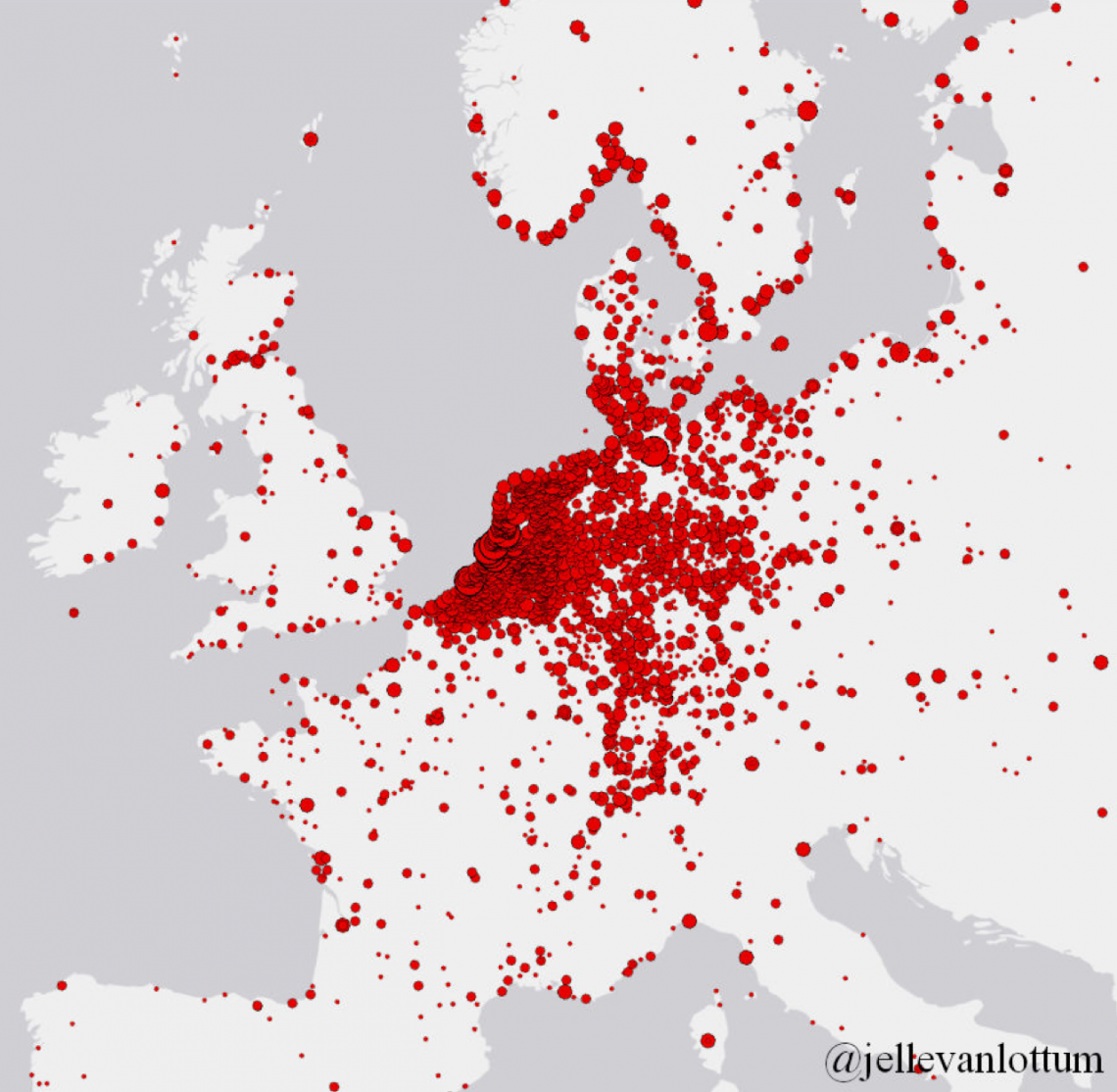-
Women sailors in the ranks of the Dutch East India Company
Last week, Jelle tweeted about the women who dressed up as men to land a job with the VOC and were fired when subsequently their ‘real’ gender became known. Several people have asked for more information, in particular about the origins of the women involved. Below is a spreadsheet that lists their (for obvious reasons fake) names, and their place of origin – all other information available about the individuals are also listed. As you can see in the ‘remarks’ column, there are some really interesting cases: a woman going by the name of ‘Hendrik Huijsloop’ married a fellow sailor on board the Petronella Alida, and the ‘Joannes Burghart’ case…
-
Grant awarded for new research into maritime careers
Samenwerkende Maritieme Fondsen (SMF), a body of six historical maritime foundations, have kindly awarded us a grant to do new research into the life and careers of Dutch sailors. We will use this money to broaden our focus to the late nineteenth and twentieth centuries, allowing us to tell new stories about sailors (on this blog, but also in a book on sailors of the Dutch merchant marine), make some more cool maps, and draw lines through history. Watch this blog and Jelle’s Twitter feed for updates on the project (2019-2023).
-
Visualizing networks and careers
We mostly post map visualizations of our historical data on sailors, but we’re working on other visualizations to gain insight into our data as well. Markov models We’ve teamed up with DHLab and Marijn Koolen (@marijnkoolen) of the KNAW-Humanities Cluster to do a thorough analysis of sailor’s careers. As a first step, Marijn produced Markov model visualization of all steps in the career data we reconstructed from the digitized VOC pay ledgers. These visualizations give very good insight into the data. The one pictured below, for example, shows the various ranks from which crew members were promoted to ‘skipper or master’ and the most frequent career steps after having served…
-
Daniel Engel: a maritime career reconstructed
Daniel Engel was a young man from ‘Dantsig’ (modern-day Gdańsk in Poland) who travelled to the Dutch Republic in the mid-18th century to apply for a job with the Dutch East India Company (VOC). We’ve written about him before (in this blog post, where we introduced the Company’s pay ledgers, one of our main data sources) and now come back to him once more. Not that Engel is so special–on the contrary, there were thousands of men like him in the ranks of the VOC–but because his story is a good case in point for illustrating our work on reconstructing maritime careers. 1766: first journey to the East Indies A…
-
Walking through the Prize Paper Dataset
This video provides a tour through the Prize Paper dataset using Kepler. Kepler is an amazing open source geospatial analysis tool for large-scale data sets. Here I’ve used it get an impression of the geographical scope of the Prize Paper Dataset – focusing on the shipping connections. Every line represents the journey of an 18th century merchant ship. As you can see the main connections are intra-European and Transatlantic. We’ll make the dataset available (hopefully) sometime early next year. Please look at my twitter feed for any updates and other visualisation (maps in particular), using this dataset.
-
Elsevier article on geographical spread VOC crew members
Dutch weekly Elsevier published an article about our work on the birthplaces of the sailors who worked on the Dutch East India Company’s ships.
-
Data: Prize Papers
One of the best early-modern maritime sources is the Prize Paper Archive, an archive held at the National Archives in Kew (London). In a project that started at the University of Oxford in 2011 and later moved to Birmingham, we’ve collected data from this amazing archive to get an insight in maritime migration in the 18th century. But what are the Prize Papers, and how can we use this source to reconstruct early-modern migration patterns? Lawful loot When a Royal Navy vessel or a private man-of-war captured an enemy ship, a court needed to establish whether the vessel was in fact a lawful prize: in other words whether the ship,…
-
Presentation at the 2018 World Economic History Congress
Today we presented the paper ‘Maritime careers in the Dutch Republic: some preliminary findings’ at the 2018 World Economic History Congress (WEHC) in Boston MA. It was great to show our findings to an international audience at the session ‘Factor Costs in the Expansion of Pre-Modern Ocean Shipping: Labor, Capital, and Knowledge Transfer, 1300-1700’, organized by Maryanne Kowaleski (Fordham University). Good career opportunities for migrant sailors Based on quantitative analysis of our Dutch East India Company’s sailors’ careers database, we argued that the tightening native labor supply in the 18th-century Dutch Republic necessitated an influx of skilled migrant workers, and that these migrant workers were given equal opportunities compared to…
-
How do we reconstruct sailors’ careers?
We published a paper on our methodology of reconstructing sailors’ careers in the HUMIGEC project. It’s called ‘Small Lives, Big Meanings. Expanding the Scope of Biographical Data through Entity Linkage and Disambiguation’ and was co-authored by Lodewijk Petram, Jelle van Lottum, Rutger van Koert, and Sebastiaan Derks. The paper was originally presented at the 2017 edition of the Biographical Data in a Digital World conference, held in Linz, Austria. The maritime dataset and career reconstruction methodology serve as a use case to introduce the Huygens ING digital biographical data policy.
-
Where the VOC crews came from
The pay ledgers of the Dutch East India Company (VOC) are an important data source for our projects (we tell more about this source in this blog post). The following dynamic heatmaps give a good impression of the regions where the sailors on board of the ships headed for Asia originated. For clarity reasons, crew members from one of the six VOC towns (Amsterdam, Delft, Enkhuizen, Hoorn, Middelburg and Rotterdam) were excluded from these maps.




